Doors are an integral part of the design of any room. They differ in size, design, materials of manufacture. Sliding room doors are very convenient - with them it is easy to create a unique design, to zone the space.
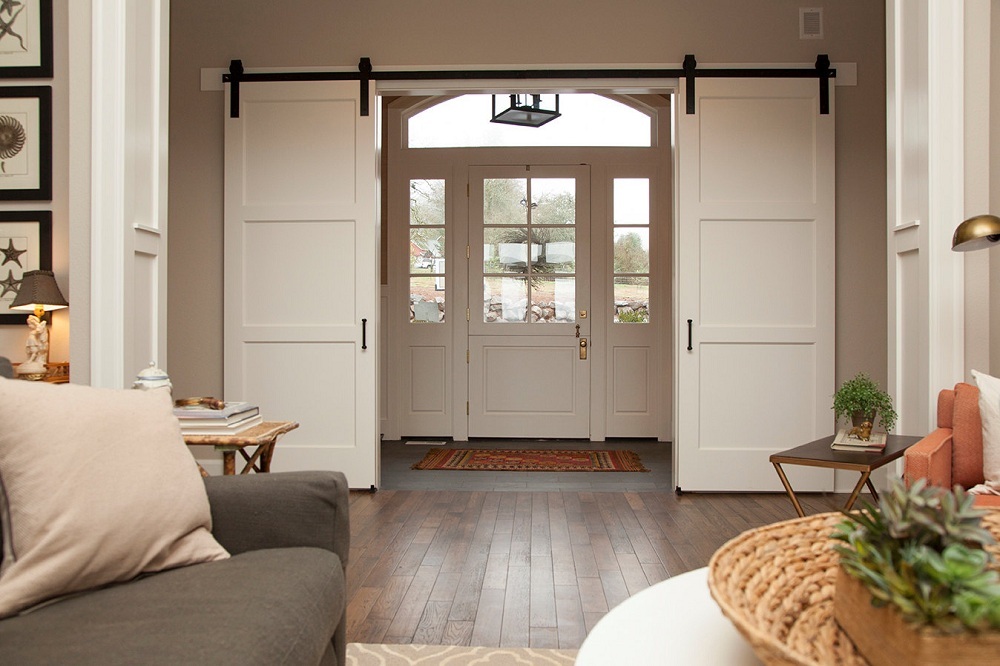
Sliding doors are easy to use and have an attractive design
Features, benefits of sliding doors in the room
Content
- Features, benefits of sliding doors in the room
- Door design options for different rooms
- Into the bedroom
- To the living room
- Into the hall
- Into the kitchen
- In the bathroom
- Varieties of interior sliding doors
- Folding type
- Parallel type
- Types of sliding door mechanisms
- Harmonic
- Coupe
- Portal
- Cassette
- Intra-door
- Cascading
- Radius
- Sliding door materials
- Conclusion
- Video: Features of the choice of design and designs of sliding doors
- Photos of examples of interior with a sliding door
Today, sliding interior doors to the living room, any other room, have several significant advantages:
- Ideal for cramped apartments, where there is simply no room left for opening the doors.
- Nicely, successfully zoning the combined space - a studio apartment, a kitchen-living room;
affordable, compact. - They have a non-standard appearance, a very diverse design.
- Easy to operate.
- The product is made in the same color as the walls or becomes an accent piece.
There are also disadvantages - this is the complexity of installation, poor thermal protection, sound insulation. It is desirable that specialists be engaged in the installation. It is important to ensure that no debris gets into the fittings - this will lead to malfunctions and complicate the operation of the structure.
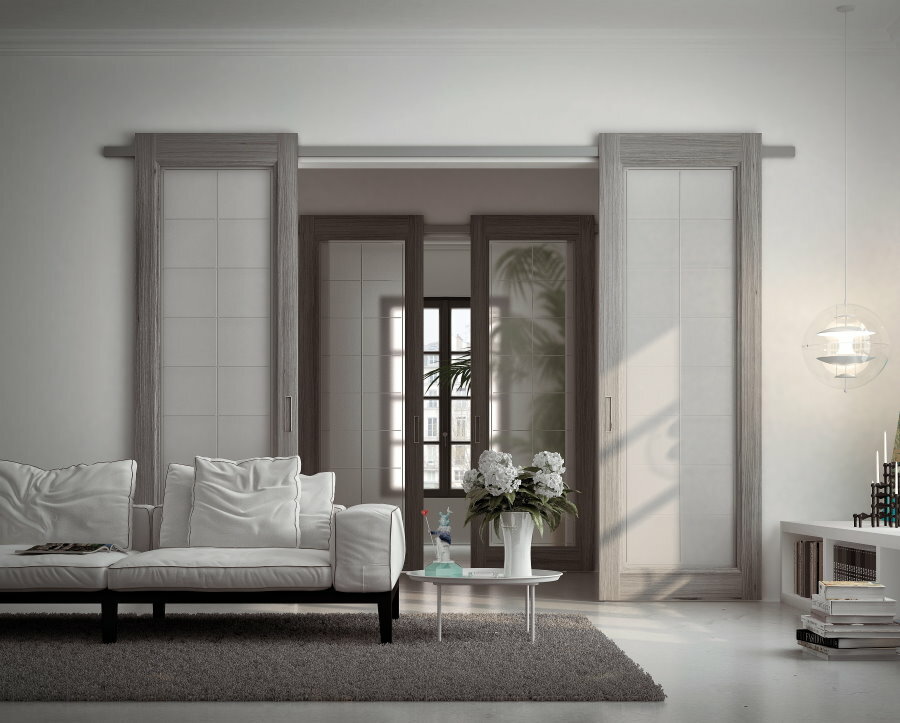
The quality of the mechanisms used directly affects the service life of the sliding doors.
It makes sense to mount sliding structures only in heated rooms.
Door design options for different rooms
Different door panels are purchased to decorate different rooms. They differ slightly in design, appearance, design, size. A standard product consists of several blades that are moved using rollers or special guides.

Wide sliding glass doors will provide maximum penetration of natural light on the terrace of a country house
Into the bedroom
Modern sliding doors to the bedroom are made opaque in order to preserve the privacy of the room. Glass options are permissible only as a symbolic zoning element. Glass with one-way visibility is also suitable. Sometimes a niche is separated by doors, arranging a dressing room, a mini-cabinet in it.
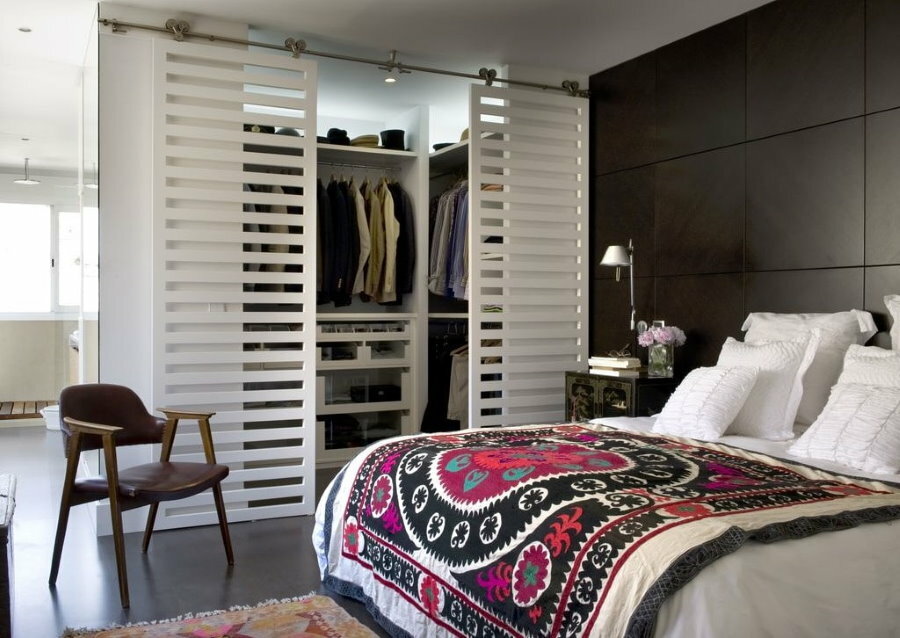
A sliding structure can be an original solution for a compact dressing room
To the living room
Wide sliding doors to any living room are made as strong and durable as possible. Here, special attention is paid to the mechanism itself - the doors will often have to be closed and opened, because the system can quickly fail.
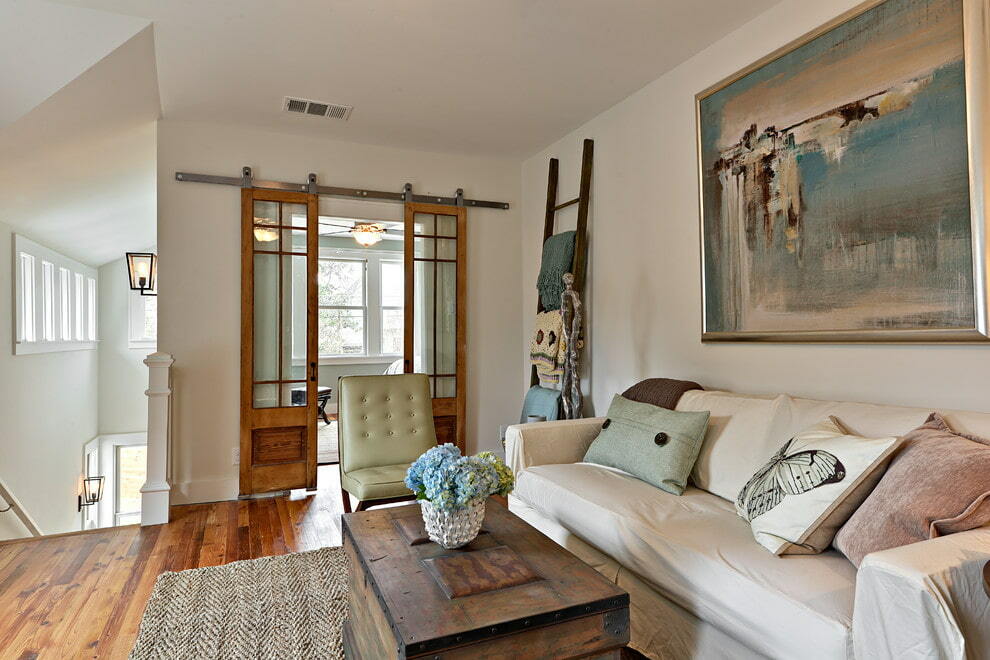
Hinged sliding doors in the living room of a country house
Into the hall
Doors leading from the hallway to the hall are also often made sliding to one or two sides. Sometimes the structure replaces a whole wall. In a spacious hall, with the help of such doors, the office space and the recreation area are separated.
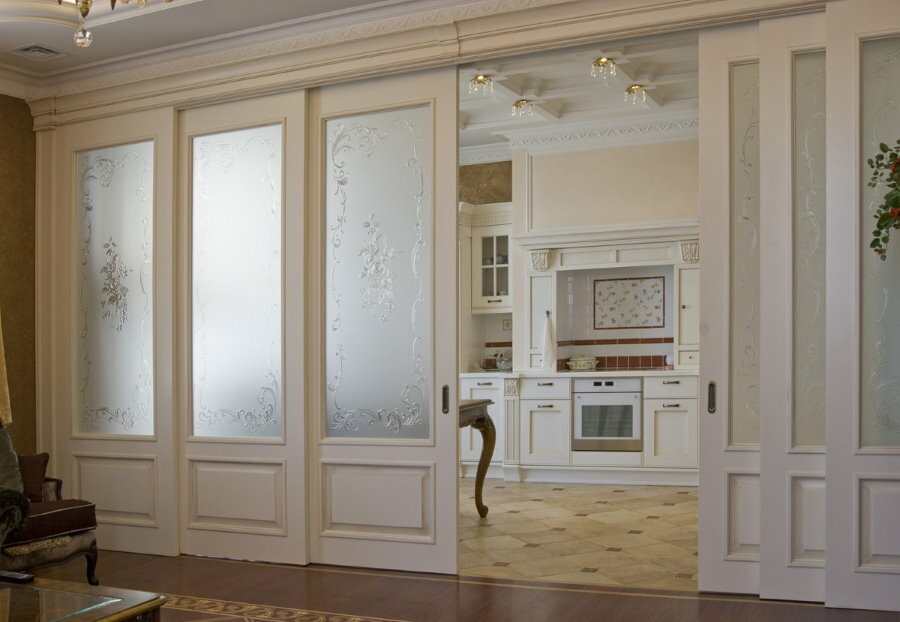
Cascading sliding doors in a classic style hall
Into the kitchen
Kitchen structures are made sliding in combined rooms. The material used is frosted glass, wood, covered with anti-decay compounds.
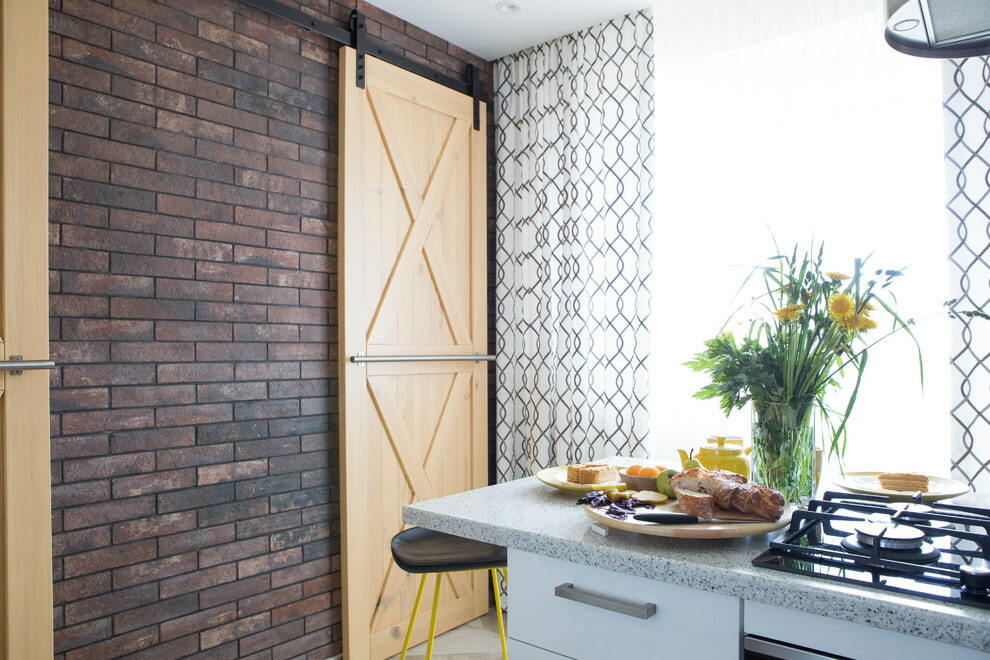
A sliding door is perfect for a small kitchen
In the bathroom
Glass and plastic are most often used here. Doors separate the shower room from the rest of the space.
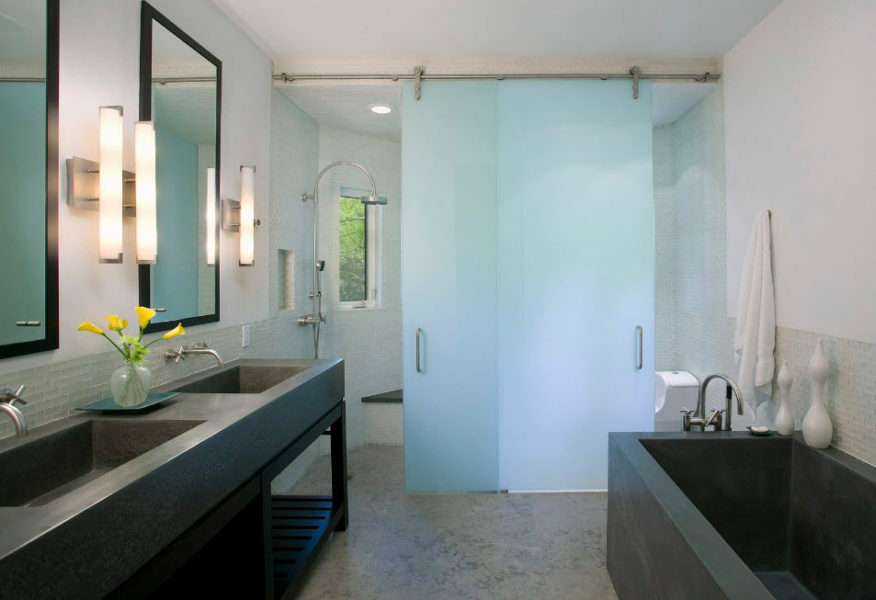
In the bathroom, sliding doors are used for space zoning.
Varieties of interior sliding doors
Sliding interior products are made parallel or folding. Both closed and open, they look different.
If several doors are required to be installed in the same room, it is recommended to make them from the same material, in the same style.
Folding type
Folding options represent an "accordion" or "book". They need some space to move.
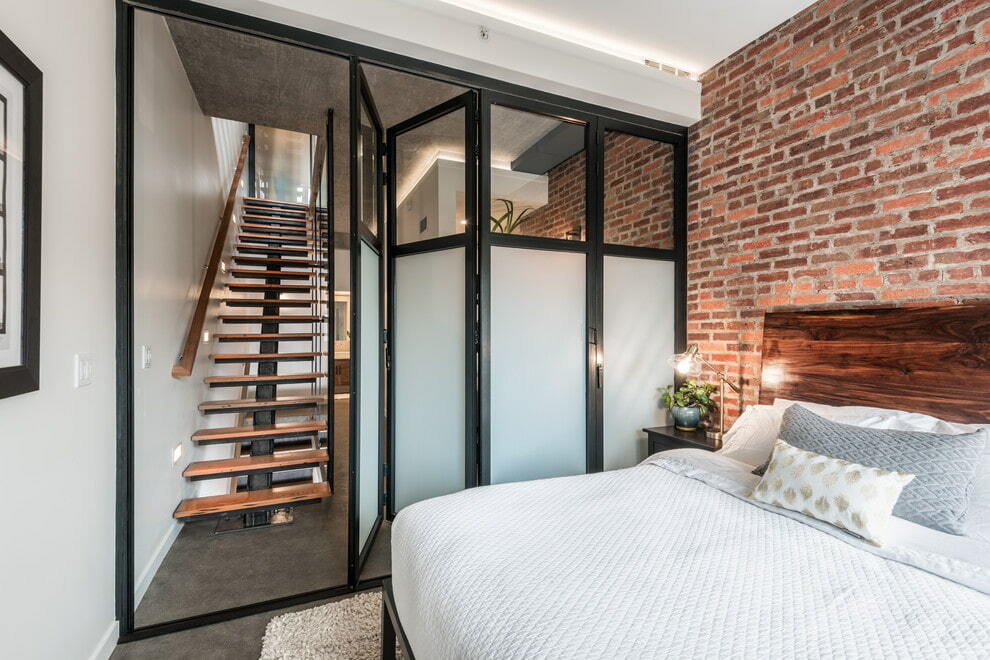
Folding door with a metal frame in a loft-style bedroom
Parallel type
Parallel structures move in two directions. The canvases move along the walls, completely opening the opening.
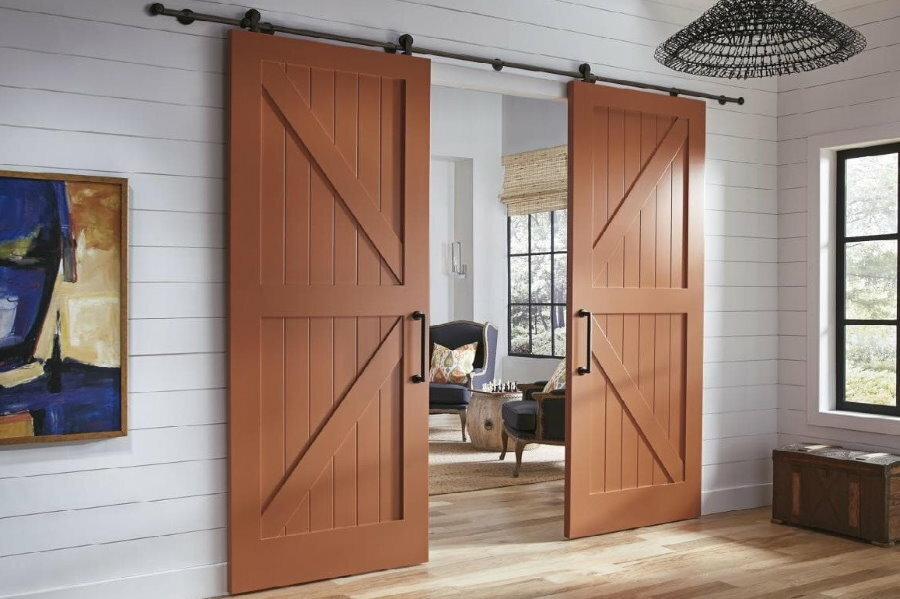
Barn variety of parallel sliding doors
Types of sliding door mechanisms
There are many different door mechanisms. These are "coupe", "accordion", "book", portal, cassette, in-door, radius, cascade. The number of flaps is usually made from one to three.
Harmonic
The accordion door is suitable for installation in the corridor, in any small area. She does not require wall space for sliding, the structure itself consists of narrow or medium-width lamellas.
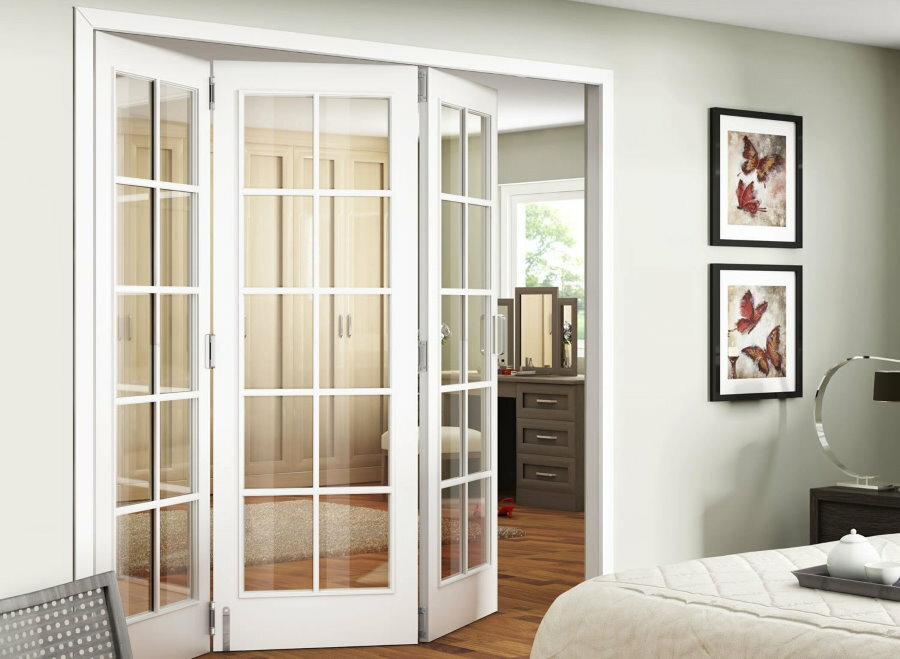
Folding segments of the accordion door can be made from a wide variety of materials
Coupe
Modern sliding doors to a spacious living room are made single-leaf or double-leaf. The first ones move along the guides located parallel to the wall, the second canvases disperse in two directions.
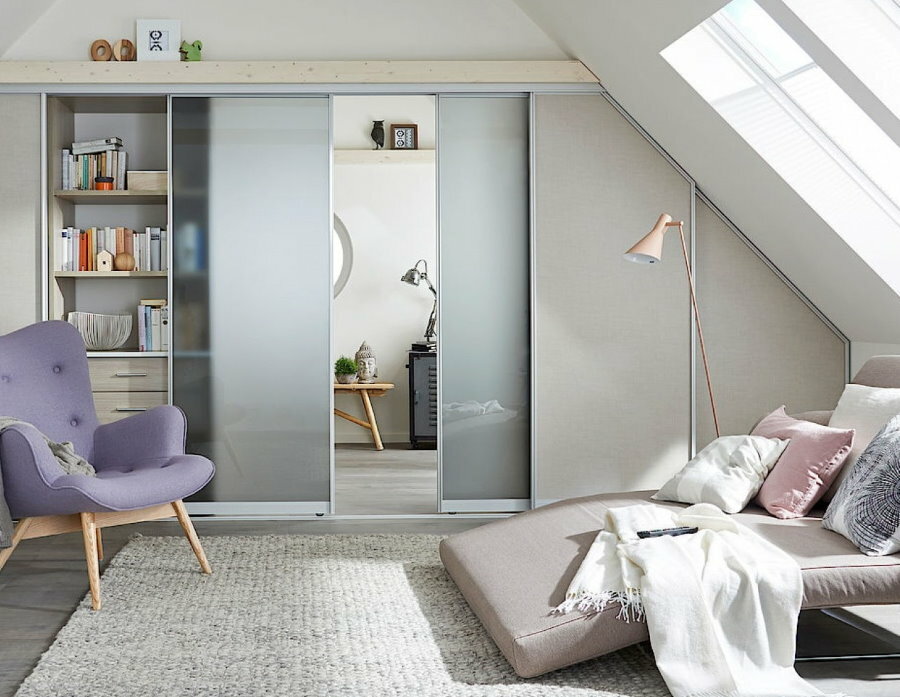
Sliding doors do not take up much space when open and are suitable for any living space
Portal
Such structures are usually installed in private homes. They are made of glass, have a wooden or metal-plastic frame. The structure is very heavy, but the mechanism is designed in such a way that even a child can easily open it.
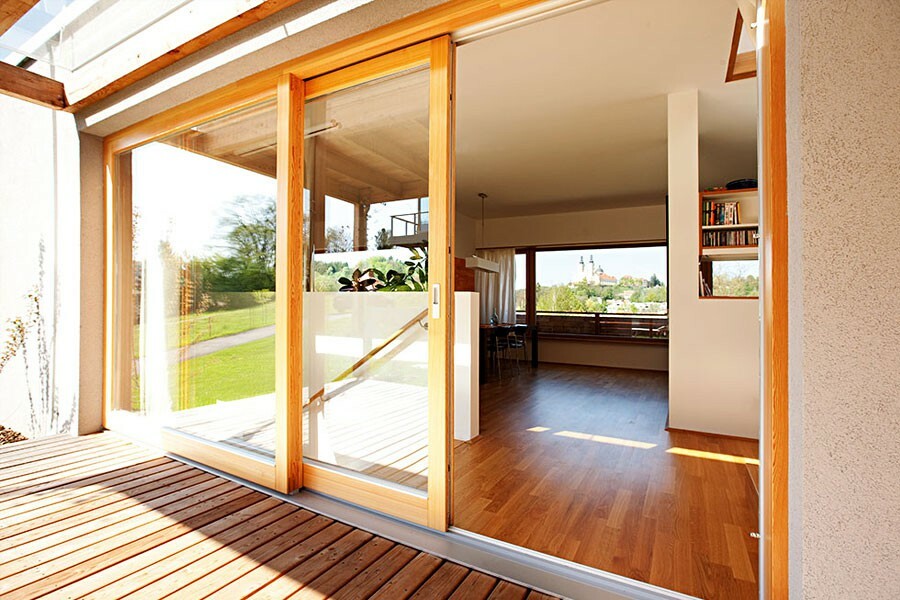
Portal doors usually have panoramic glazing and completely replace the wall
Cassette
They have one or two doors. When open, they hide in specially made niches in the walls.

Cassette doors are conveniently hidden inside the wall, without violating the integrity of the interior of the room
Intra-door
The doors of this design move only inside the opening. Only half of it remains for the passage.

Internal doors serve to decorate a doorway of a sufficiently wide width
Cascading
A kind of "cascade" consists of one fixed and several mobile door leaves. They all move, fold in one direction.
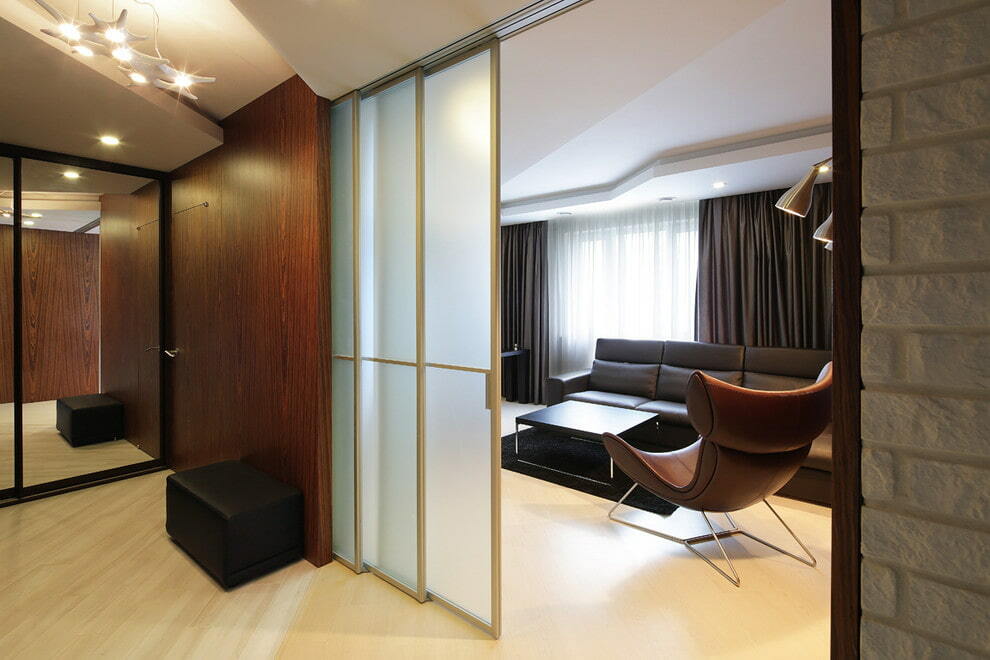
Cascading doors are used to decorate wide doorways
Radius
They are installed in rooms with a non-standard, round shape. The canvases here move in a circle.
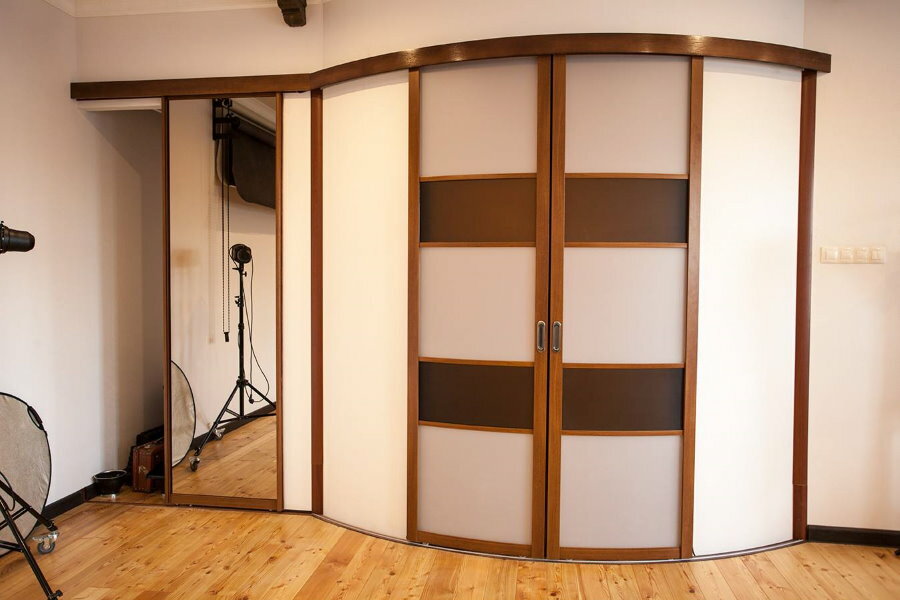
Semicircular doors are distinguished, perhaps, by the most beautiful and aesthetic design.
Sliding door materials
Sliding doors to the room are made of various materials - wood, chipboard, fiberboard, MDF. Sometimes several materials are combined - wood with glass, metal with rattan, etc.
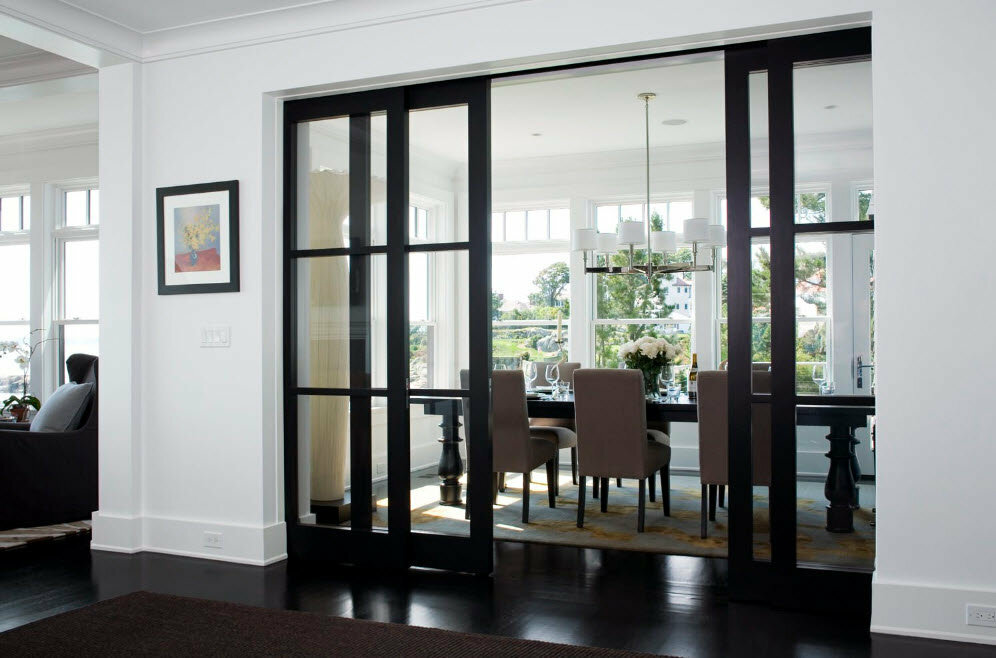
Glass inserts on a timber frame - a popular combination for sliding doors
- Natural wood. Wooden doors look the most solid. They are strong, durable, but they are not suitable for installation in wet rooms (kitchen, bathroom), without a special coating.
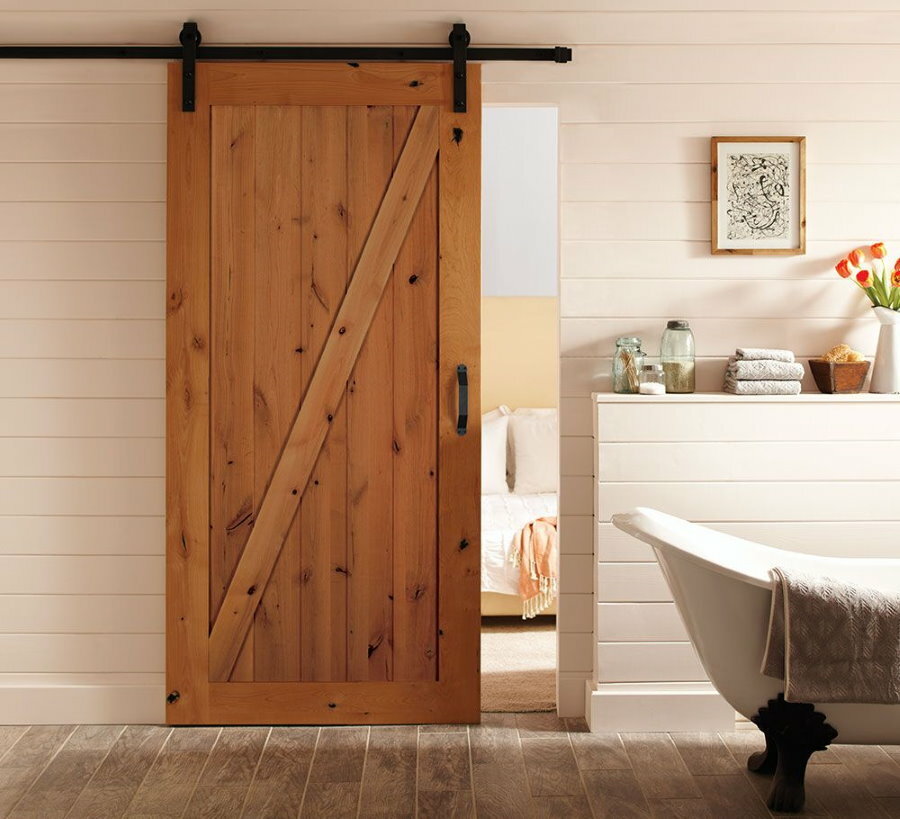
Wooden sliding door looks attractive and stylish in any design
- Fiberboard and chipboard. Such items are cheap. They are decorated with self-adhesive films, veneer, and painted in different colors.
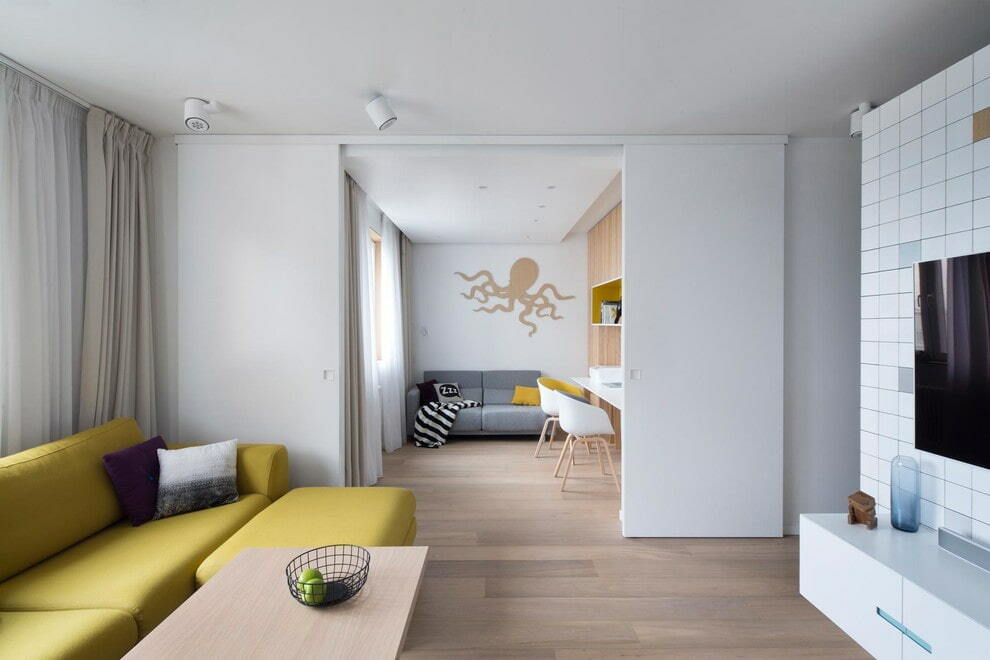
Laconic model of a sliding door based on chipboard
- MDF. The structure of MDF is more affordable than wood. It looks good and is durable.
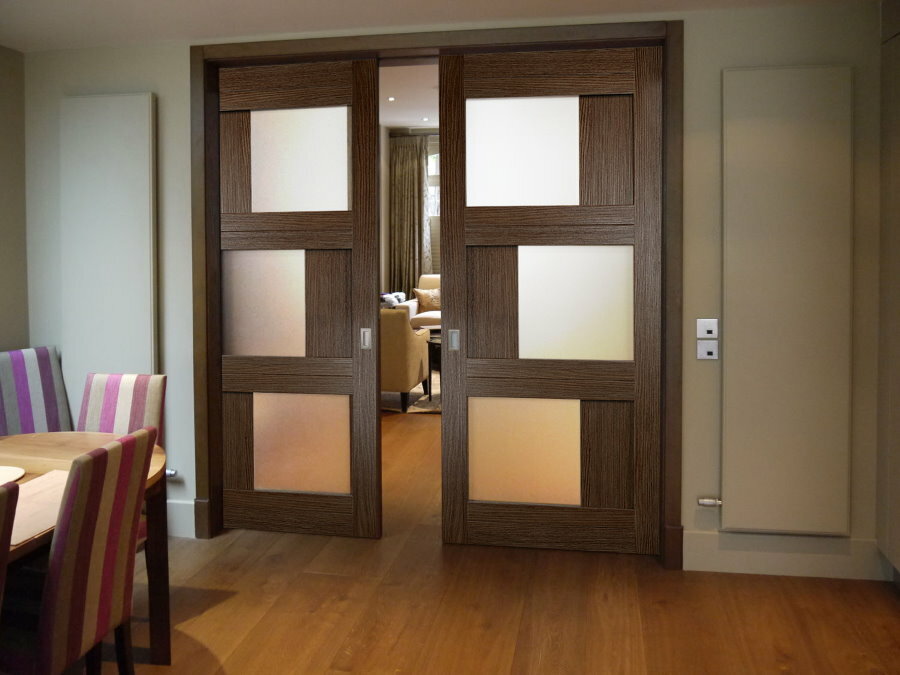
Decorative coating of MDF doors can imitate absolutely any natural material
- Glass. Impact-resistant material is used for manufacturing. This is a transparent, colored, frosted, patterned (with a pattern made by plasma cutting) glass.
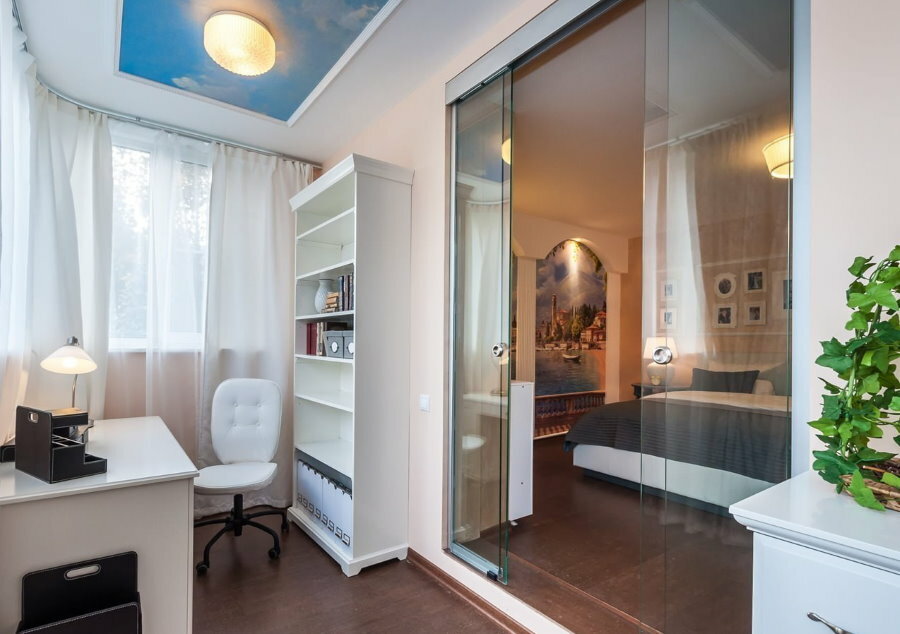
The glass panels of sliding doors can be transparent, tinted, matt or decorated with a sandblasted pattern.
Conclusion
Any configuration sliding doors to the room are made ordinary or decorated with patterns, drawings. Some options in the photo are sliding screens, while others, when folded, are completely hidden in the thickness of the walls. High doors made of wood and rattan will decorate the ecological interior, completely glass, mirrored, suitable for high-tech.
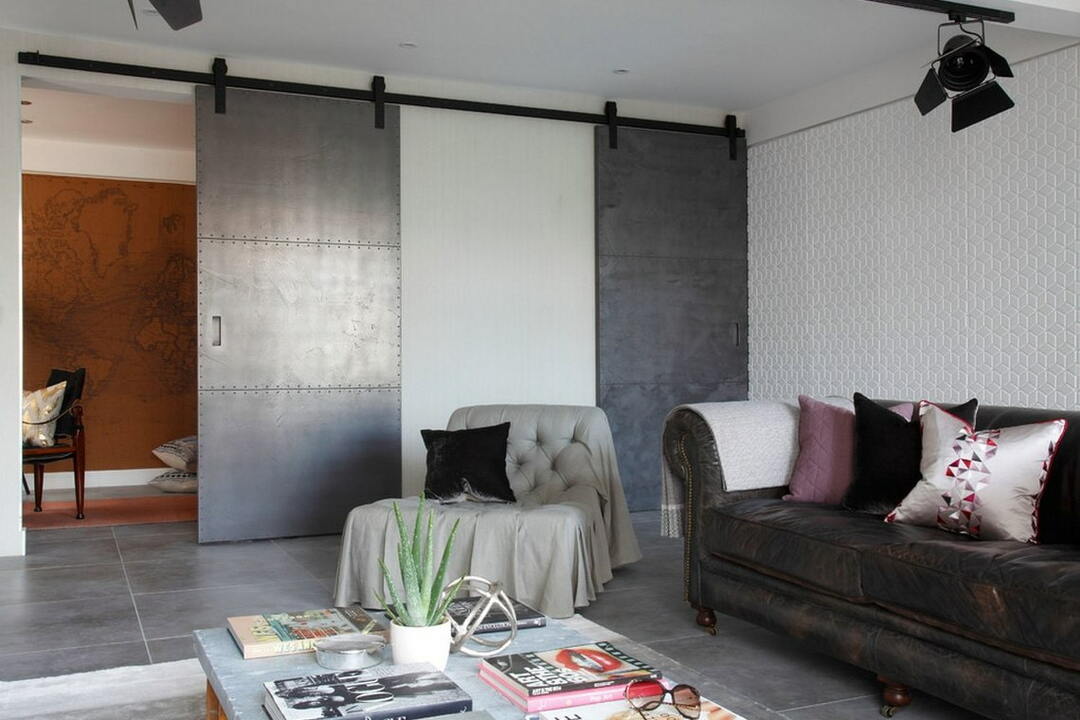
Solid metal sliding doors in an industrial style living room

Lightweight models on a wooden frame in an oriental interior
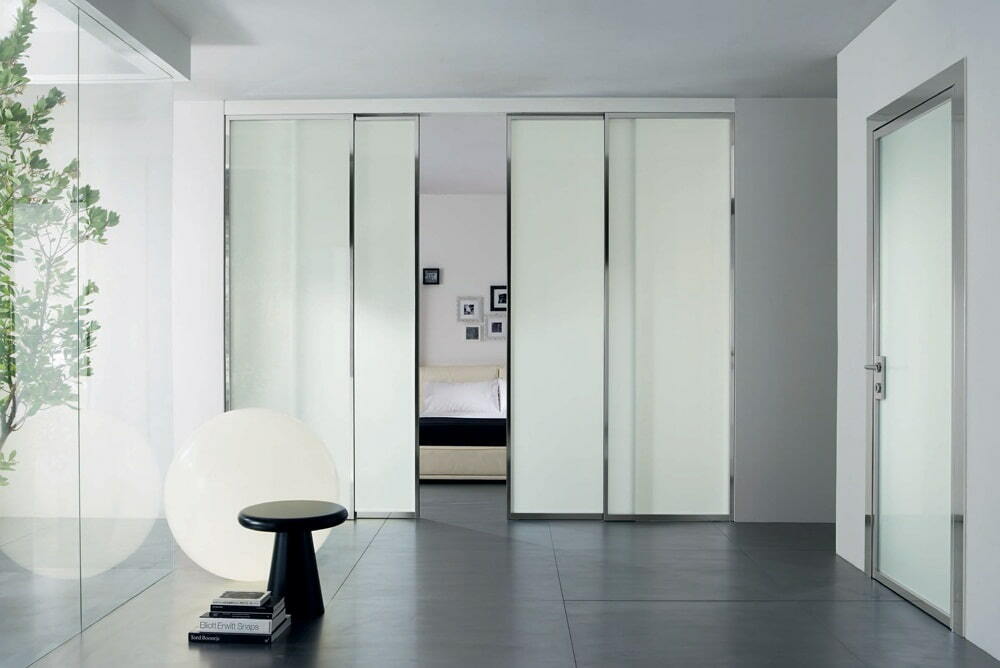
High-tech style plastic sliding doors
Beautiful sliding doors to a room are a great idea for any space. They are installed with their own hands or they are called by a master who knows how to do it. Ready-made structures are purchased in hardware stores or via the Internet.
